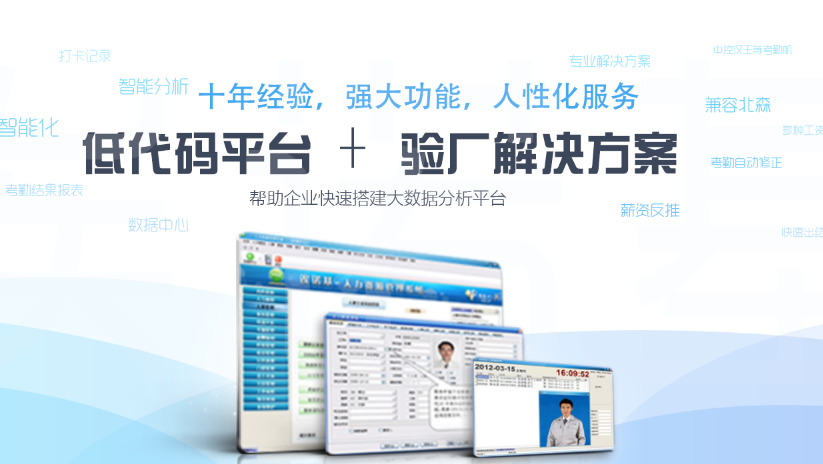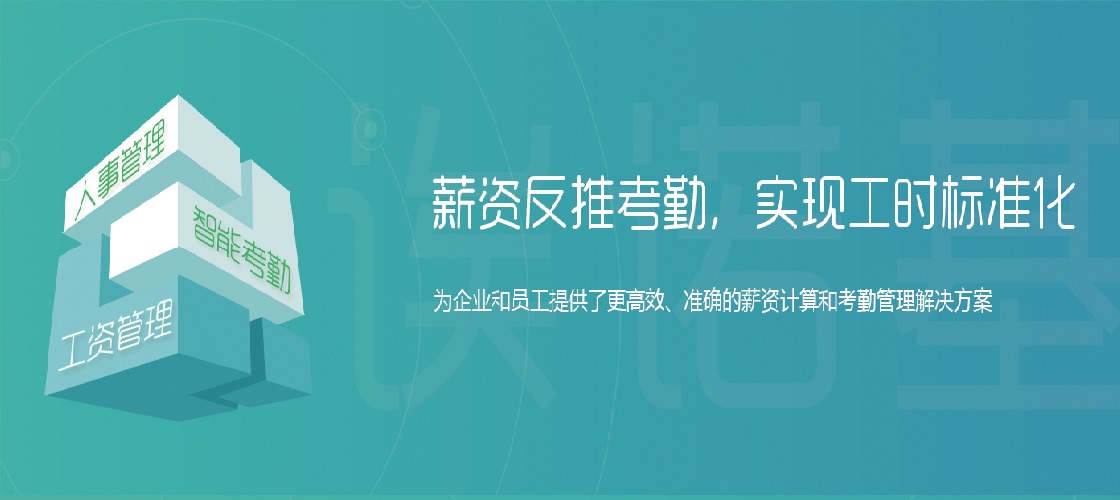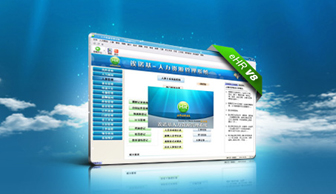Reducing corporate costs = layoffs? Maybe there's another way out.
更新时间:2019-03-12 18:12:00•点击:564333 • Industry Views
A well-known communication industry entrepreneur has a discussion on how to do a good job of cost control: "The most difficult thing in management is to control costs. There is no scientific and reasonable cost and cost control method. Enterprises are at a critical juncture, and all employees must mobilize. Optimize management, reduce people, increase production, and raise wages."
This paragraph sums up a total of two meanings: First, emphasize the importance of cost control; Second, point out the idea of controlling costs - reducing people, increasing production, and raising wages.
But we have to admit a reality: the economy is going down, everyone has no money, and it is hard to make money. As a result, “increasing production” and “increasing wages” are not realistic, and enterprises can only be forced to helplessly join the “reduction of people”, which is the wave of layoffs.
However, after layoffs, companies will need to pay new employees higher salaries, spend resource training, and bear the risk of insufficient capacity. As a result, the hidden costs of layoffs are far more than imagined.
That being the case, in addition to layoffs, what else can companies do to reduce costs? We may turn our attention to the past and have been neglected and “can’t count the accounts”, but for all small and medium-sized enterprises, they must “have to face” cloud and IT management. problem.
Why do companies have to go to the cloud and conduct IT management?
First of all, we have to make it clear that the object of "reducing costs" must be an inescapable part of the work for enterprises. So first explain why companies must conduct cloud and IT management.
From the perspective of cost reduction, whether it is to optimize the business operation process or lay off employees, it is necessary to realize the goal by automating the business process and business process. On the enterprise cloud, it is the ability to rapidly form informationization through cloud services, and use cloud software applications and data services to improve the efficiency of enterprise management, and ultimately achieve the purpose of reducing management costs.
Some people have specifically budgeted. When a company has more than 100 terminals (including PCs and any access devices), the overall investment in selecting a cloud platform network will be less than that of a traditional network.
So I think that the necessity of clouding in enterprises is unquestionable. The core of cloud computing is to realize the centralized construction and centralized management of information resources, avoiding repeated investment and waste. The intensive effect of resources can bring great cost savings, which is corresponding to the demand of many enterprises based on current economic downturn to reduce costs.
In August last year, the government issued the “Guidelines for Promoting Enterprise Cloud Implementation (2018-2020)”, and proposed that by 2020, cloud computing should be widely used in production, operation and management.
The release of the policy not only encourages the enterprise to cloud, but also reflects the necessity of the cloud on the enterprise. Enterprise cloud is not only the only way to promote the environment, but also the fundamental means to reconstruct the core competitiveness of the enterprise. For more than 70 million small and medium-sized enterprises that are undergoing transformational pain in China, Shangyun is the dawn.
The importance of Shangyun is self-evident, so why should the article put IT management in the same position as Shangyun?
Let's first enumerate, the most intuitive work of IT management: data security management, employee attendance, online behavior management, virus protection, network management, portable WiFi management, U disk management, hardware and software asset statistics, assistance The construction of information automation, and most importantly, also includes the guarantee of cloud security.
In other words, the demand for the transformation of the cloud is in front of us. If the IT construction is not carried out, the enterprise is tantamount to “streaking”.
However, many current decision makers believe that the so-called "survival" of making money is the top priority of business management, including security management, including IT management. It can be placed in the "secondary" or even unimportant after the enterprise makes money. "losing money" trading.
This idea, because of human nature, is understandable, but from the perspective of enterprise development, it is absolutely wrong.
Take a small link in the management of IT management, "U disk management", it is difficult for small and medium-sized enterprises to configure a dedicated CSO (Chief Network Security Officer) and other responsible persons, if some "inner ghosts" are in an unprotected situation. Under the guise of copying company data through U disk, selling to competitors or causing large-scale information disclosure and other illegal activities, once the law is reduced, the bosses will have to go in and eat for a few years.
Repenting, but it is too late.
How many accounts are “not clear”?
In fact, not all companies have the ability to build an Internet platform, and large companies still have difficulties, especially for a large number of small and medium-sized enterprises. Therefore, companies must think clearly whether they choose “private cloud” or “public cloud”.
The investment in building a private cloud server is terrible. I believe that the decision makers who have the cloud demand may be more clear than the author. According to the performance, the price fluctuates within the range of 200,000 to 1.5 million, so most small and medium-sized enterprises eventually Will choose to use the "public cloud" directly.
Let's analyze IT construction and management again. For most small and medium-sized enterprises, the funds available for IT construction and management are very limited, so there is often only one IT management and operation and maintenance personnel. However, as far as the above-mentioned numerous IT management is mentioned, it may be that one or two jobs have exceeded the compliance, and human resources alone cannot be satisfied.
Therefore, enterprises need to purchase a large number of additional hardware devices, such as online behavior devices, firewalls, anti-virus software, and equipped with dedicated operation and maintenance personnel. At the same time, it may need to recruit more IT managers and positions.
We may wish to calculate an account. Take the online behavior management device as an example. The overhead of a device is about 2w~10w+yuan/year, and it is limited to the same location (with LAN restrictions). It cannot be applied to distributed office scenarios. If the enterprise has multiple points in multiple locations. Companies or offices also need to purchase the same amount of hardware equipment.
Since the procurement of online behavior management equipment, U disk management, network management, portable WiFi management and other equipment is also essential, each device 5w / year as an example, add up and throw away more than 10,200,000.
If this is the case, the cost of investing in IT hardware for a year alone will be as high as tens of thousands or more.
At the same time, with the equipment, we also need to hire an IT administrator? Generally speaking, the annual salary of a senior network/system administrator is about 5W-12W depending on the region. If you need to hire a project manager. The annual salary may exceed 100w!
In addition, due to the lack of automation and information capabilities, employees will also be unable to estimate the specific value of property losses due to absenteeism, passive absenteeism, and poor turnover. The key point is that it will affect the development of the business and drag the enterprise back.
In this way, the cost of small and medium-sized enterprises investing in IT construction and management is as low as hundreds of thousands and as many as one million. Such a huge expenditure is only invested in IT construction and management. It is no wonder that there are a large number of decision makers who choose to give up corporate security, prefer to streaking, and give priority to the development of the company's business.
With the continuous hardware technology, the machine is also depreciating at an extraordinary speed. It is very unworthy to invest a large amount of money in the rapidly depreciating hardware equipment, and cultivate a group of IT personnel who cannot directly create economic value. There are even more unclear and unclear words.
Therefore, the hidden costs that enterprises need to invest in decentralized purchase of IT management equipment and equipped with operation and maintenance personnel are far more than what is seen on the surface.
When the account is settled, policy makers will find it easy to find a software that can help companies quickly deploy to the cloud and cover all possible work in IT management and automate and informative upgrades. It is the current economic downturn, and the most appropriate and long-term way for companies to reduce costs.
Therefore, this answer is also coming out - SaaS.
In order to "throttle", but more able to create "open source"
For small and medium-sized enterprises, cloud computing is directly upgraded from the state of enterprise informationization. SaaS must be the first step for these enterprises to contact cloud computing.
There is no doubt that SaaS cloud services can help companies “throttle”. The cost advantage of cloud services is first and foremost a structural change. As we have listed above, traditional IT management and information application requires a large amount of cost for software and hardware installations, and continuous investment of large amounts of funds and manpower for continuous system operation and upgrade.
But SaaS can solve this kind of problem in one stop, that is, "one is all." A cloud security terminal SaaS not only covers cloud security protection and data security management, but also covers a series of requirements such as online behavior management, U disk management, hardware asset statistics, and remote management in IT construction and management. Reducing the personnel and capital investment in IT maintenance can help IT administrators to liberate themselves from too long and trivial tasks, and free up their energy to invest in research and development that is more valuable for enterprise IT construction.
At the same time, IT management is by no means a hammer sale. In the subsequent upgrade and maintenance of hardware equipment, the most worrying is the problem of product upgrade lag and slow maintenance response. In the "cloud" world, because the system is located in the server cloud, there will be a dedicated team to maintain at any time, anywhere, and around the clock to ensure the continuity and continuity of the service, there will be no need for help.
When the enterprise business expands, such as opening a branch structure in a new location, due to the flexible scalability of cloud computing and SaaS, the traditional complex system deployment is no longer needed, and the business needs can be quickly supported.
Venus Star has previously released the "2018 SME Terminal Management Industry Trend Report". According to the statistics of the past year, the Venus Chenyun security terminal SaaS platform is trusted. In the 10000+ deployment of cloud-trusted SMEs, online behavior management, timed shutdown and U disk management and control functions become small and medium-sized. The top three most popular enterprise terminal management features.
Among them, the online behavior function helps SMEs optimize employee online behavior, improve work efficiency, optimize network bandwidth, and avoid the trouble of downloading rogue software and Trojan virus.
The timed shutdown function effectively prevents the small and medium-sized enterprise employees from going off work without shutting down, and the public computer is unmanaged, resulting in a decrease in the service life of the computer and wasting the enterprise's power resources. In one year, Yunzi Trust has helped the user to shut down the computer 15W times, reducing the carbon dioxide emissions by 16,000 kg, and also making a small contribution to the environmental protection cause.
The U disk management and control function optimizes the U disk management process for small and medium-sized enterprises, avoids the random access of the poisoned U disk to the computer, and the important files flow out through the U disk, which reduces the loss for the enterprise and ensures the stable and healthy development of the enterprise. Important puzzle.
In addition, Yunzi Trust also manages software, effectively prohibits rogue software and maliciously bundled, virus-carrying software from entering the computer, and disables useless third-party software to effectively ensure employee productivity.
At the same time, Yunzi Trust will promote and uniformly install the officially tested third-party anti-virus software to help administrators regulate the use of company anti-virus software.
The hardware asset statistics can save the administrator's complicated and cumbersome manual statistical mode, which not only avoids the human error, but also makes the enterprise clear the asset classification at a glance.
The unified management of the terminal is the first choice for distributed enterprises. No matter the number of branches or offices, there is no need to deploy servers or hardware gateways. As long as the cloud sub-trusted client is installed, the unified reporting of all terminals can be achieved. And control.
However, even if you choose to deploy SaaS in order to reduce costs, it still has to go through a process of “saving money” for business decision makers. The current economic downturn is very painful compared to this process. However, when compared to the past hundreds of thousands or even millions of IT costs, I think this money may cost too much.
Moreover, the value that SaaS can generate for the business is not limited to reducing costs and “throttle”. It should be known that the core of cloud security terminal class SaaS, whether it is enterprise cloud or IT construction and management, is a prerequisite for small and medium-sized enterprises to ensure that they have core competitiveness and are safe and stable.
Only by constantly counting the hardware assets of the company, ensuring the employees' earnest and efficient working attitude, preventing the economic losses and legal responsibilities caused by the leakage of the "inner ghosts", and eliminating the waste of resources caused by unnecessary trivial matters can ensure the health of the enterprise.
From this perspective, SaaS brings “throttle” to the enterprise, and at the same time, it is not creating the wealth of “open source”.
end
In the current economic downturn, small and medium-sized enterprises resources and funds must be aware of themselves and find a way to survive. Don't blindly follow the crowd, blindly lay off employees, don't go to hospital, madly burn money, buy in a basket, so as not to bring endless hidden dangers in the future.
People say: icing on the cake is easy, and it is difficult to send charcoal in the snow.
SaaS is one of the things that really wants and can help small and medium-sized enterprises achieve cost reduction, transformation and enhance their core competitiveness.
Recommended Reading
-
Which AB account inspection software is good?
2023-10-31 09:47:54•1428124 次
-
Enterprise factory inspection software solution
2023-09-27 13:40:41•145589 次
-
Solution for Backward Deduction of Factory Attendance Salary
2023-09-19 20:42:29•184750 次
-
What is eHR system? How do enterprises choose eHR system?
2019-03-29 14:28:00•1215755 次






